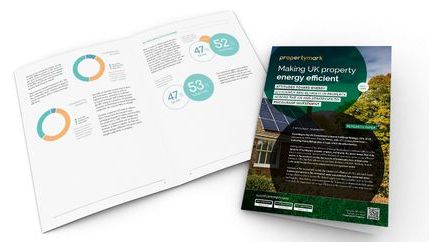
Housing quality and condition
Read the housing quality and condition report →
Private tenants are still most likely to live in non-decent, hazardous, or damp homes, although 2.1 million owner-occupiers also live in properties with at least one category 1 hazard. Damp is a particular issue for the PRS, with private tenants five times more likely to live in a home affected by dampness than owner-occupiers.
Rural homes are twice as likely to have a category 1 hazard present than urban properties. Houses in villages and hamlets tend to be older, less energy efficient, and have higher levels of disrepair, with 26% failing to meet the Decent Homes Standard (DHS), which will ultimately be a mandatory requirement for the PRS according to UK Government policy. The median cost to bring non-decent homes up to the Standard is £7,953.
Propertymark supports the UK Government’s proposals to extend the DHS and Awaab's Law to rented homes and has long campaigned for robust training, qualifications, and competency standards for property managers, as well as adequate resources to enforce standards.
Professionalise the PRS to safeguard tenant health and safety
As a report from the Commons Health and Social Care Committee (HSCC) calls for urgent action from the UK Government to set out a timetable for a Decent Homes Standard for the private rented sector (PRS), Propertymark reiterates the need for robust training, qualifications, and competency standards for property managers across both sectors, as well as adequate resources to enforce standards.
Who lives in the PRS?
Read the rented sectors report →
Around 19% of the population live in the PRS, and on average they are younger than in other tenures. Single-person households account for 33% of the sector and 40% is made up of couples with or without dependent children.
5% of PRS homes are overcrowded, with properties in London accounting for many of these. However, far more - 16% - are under-occupied, with at least one spare bedroom.
Weekly housing costs are higher for private renters than any other tenure (mean £231). There is significant regional variation in affordability, with private tenants in London paying twice as much as those in the North East.
To avoid further acceleration of rent rises, the proposed Renters’ Rights Bill must not introduce rent caps in England. Evidence from Scotland on the impact of the Cost-of-Living legislation highlights the devastating pressure that rent caps placed on the sector, resulting in less supply and higher rents overall.
Private landlords are vital housing providers, and must be able to cover the costs of offering and maintaining a property. Repair and maintenance costs continue to rise, and it’s essential that landlords can afford to keep properties to a high standard in the interests of their tenants.
Devastating impact cost of living legislation having on the PRS
Patrick Harvie MSP, Minister for Zero Carbon Buildings, Active Travel and Tenants’ Rights, has again asked Propertymark to provide evidence on the controversial Cost of Living (Tenant Protection) (Scotland) Act 2022. For the third time, we surveyed members in Scotland and were unsurprised to see the disturbing effect that is taking place.
Section 21 numbers minimal
Read the security of tenure fact sheet →
In 2022-23, most private renters (63%, 424,000 households) who had moved in the last 12 months stated they ended their tenancy by choice. Job-related reasons were the most common driver, followed by wanting a larger property or to live in a better area.
Only 9% of PRS households said they had left a property due to eviction, and in most cases, this was because the landlord wanted to sell or move into the property themselves. Just over half were asked to leave informally, 37% stated they were issued a Section 21 notice, and only 2% received a Section 8 notice.
78% of private renters said they currently felt safe from eviction, and 68% felt their housing situation was secure enough for them to be confident in making long-term decisions about their lives. Three-quarters said their rented property felt like home, and most also felt invested in their community.
Energy upgrades need funding
The energy efficiency of English housing stock has increased over the last ten years, with over 90% now rated EPC D or above, up from 70% in 2012.
The EHS used their data to identify the characteristics of the most and least energy efficient homes in the country, concluding that a pre-1919, privately rented, converted flat in the South West is most likely to have an EPC of E or below, whereas a post-1990 purpose-built, high-rise flat in London, rented from a housing association can be expected to have an EPC of C or higher.
The cost to improve the average dwelling to EPC C is around £7000, so without providing property owners with incentives and access to sustained funding, it is unlikely that energy efficiency targets for the PRS will be met.
Propertymark has campaigned for decision-makers to move away from a one-size-fits-all policy and develop energy efficiency proposals that work with the different ages, conditions, and sizes of properties.
Making UK property energy efficient
Financial implications, practicality, consequences, and communication surrounding energy efficiency measures are key concerns cited in Propertymark’s latest report which provides recommendations to help homeowners, landlords, and tenants save money, create new jobs and fight climate change.







